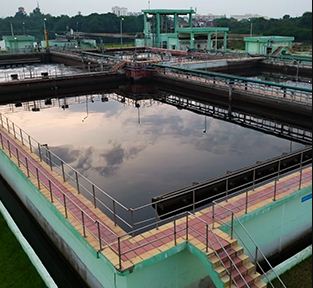Wastewater requires strategic treatment ensuring that its pollutants are not contaminating the environment further. However, releasing the polluted water into the groundwater or other resources creates a menace to the environment. The water treatment companies upgrade the process of wastewater treatment with Zero Liquid Discharge technology. ZLD is the much-needed revolution that could transform the process of water treatment to a larger extent.
Releasing the untreated or leftover discharge to the water bodies was the practice employed by many industrial sectors. These companies were not only water-demanding but were contributing immensely to increasing groundwater pollution. The process of wastewater treatment remains incomplete until the risk to the environment and human beings is completely eliminated. With the advent of Zero Liquid Discharge, this concept can be ascertained.
Every water treatment plant should engage ZLD tech for wastewater treatment ensuring the ejection of any harmful substance becomes nil during the process.
Factors Supporting Zero Liquid Discharge
Just hearing the term does not create an impactful impression on the listeners. Understanding ZLD from the perception of water economics becomes easier. Problems like water scarcity and the dearth of freshwater resources generate the demand for water conservation. Moreover, the protection of the resources supplying fresh water becomes the responsibility of the industries releasing harmful discharges to these water bodies.
Zero Liquid Discharge ensures no residue is released into the environment. Water treatment solutions that extend the problem to natural resources are not sustainable. ZLD has become a sustainable approach toward wastewater treatment. Let’s expound this further how ZLD is the right approach to target while treating wastewater.
To maintain adherence to water norms and regulations
Every nation executes acts and laws to protect the environment. India has several acts supporting the cause of water conservation and preventing water bodies from being polluted. The Water Act of 1974 projects the idea of maintaining the immaculateness of water bodies.
Cesses were imposed on the industrial sector. Implementation of ZLD is upholding the value of governmental regulations to protect water resources.
Combatting the issues of water scarcity
To protect water from turning into a scarce resource, ZLD is an effective method. To safeguard the existing water bodies, industrial waste is recycled and put to further use. If the industrial sector continues to use water negligently while discharging harmful constituents into the groundwater then water scarcity could be the next pandemic across the world.
While water-scarce conditions are being tackled by different means, ZLD can be the way forward for the industrial sector to maintain sustainable practices.
Upholding the paradigm of water economics
To develop one aspect of a nation another aspect cannot be compromised. In the beginning, the condition of the industrial sector was similar. Water economics explains the reasons for addressing the challenges of water wastage. Wastewater from the industrial sector was the major cause of river pollution. Therefore, methods were evolved for wastewater treatment.
Yet, noticeable polluting water discharge was affecting the quality of groundwater. Therefore, Zero Liquid Discharge can be the best approach as it leaves no room for water pollution by industrial activities.
Recovery of important substances
Applying the ZLD method, the water treatment companies recover many useful products i.e. several chemical compounds and salts. These salts and chemical compounds that are recovered in the process of wastewater treatment can be seen as an economic advantage.
Conclusion
Today, a water treatment plant can be set up with the help of leading companies in the industry. These companies are targeting the issues of water scarcity and providing efficient and sustainable wastewater treatment solutions. These companies are helping in the implementation of gigantic wastewater ZLD projects in India. The companies are employing the leading technologies as per the industry standards for meeting the wastewater treatment demands in the nation.



